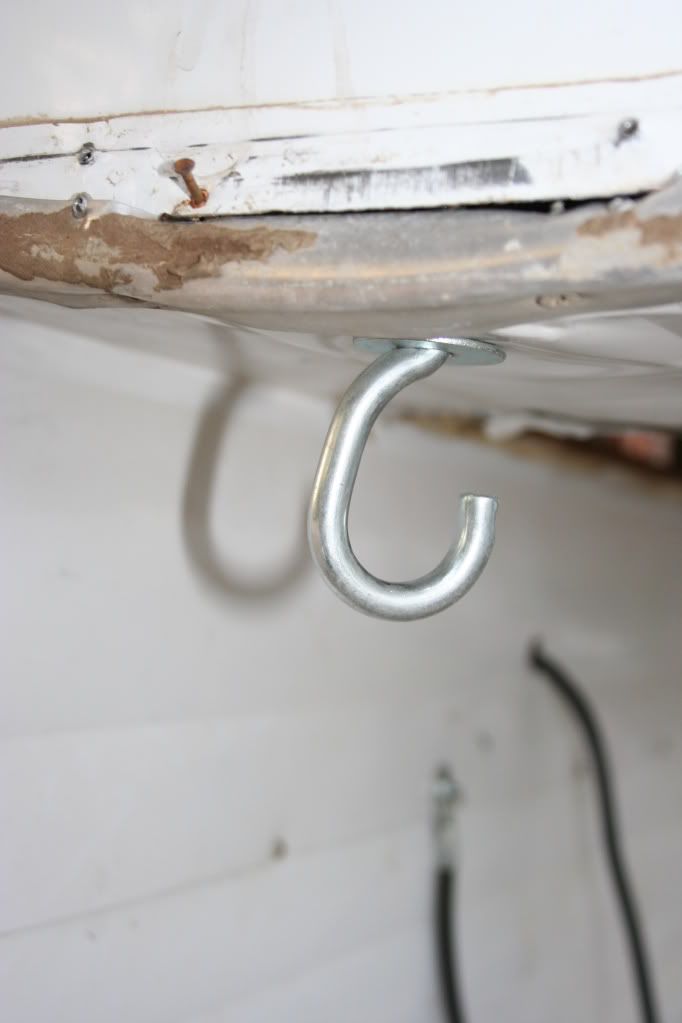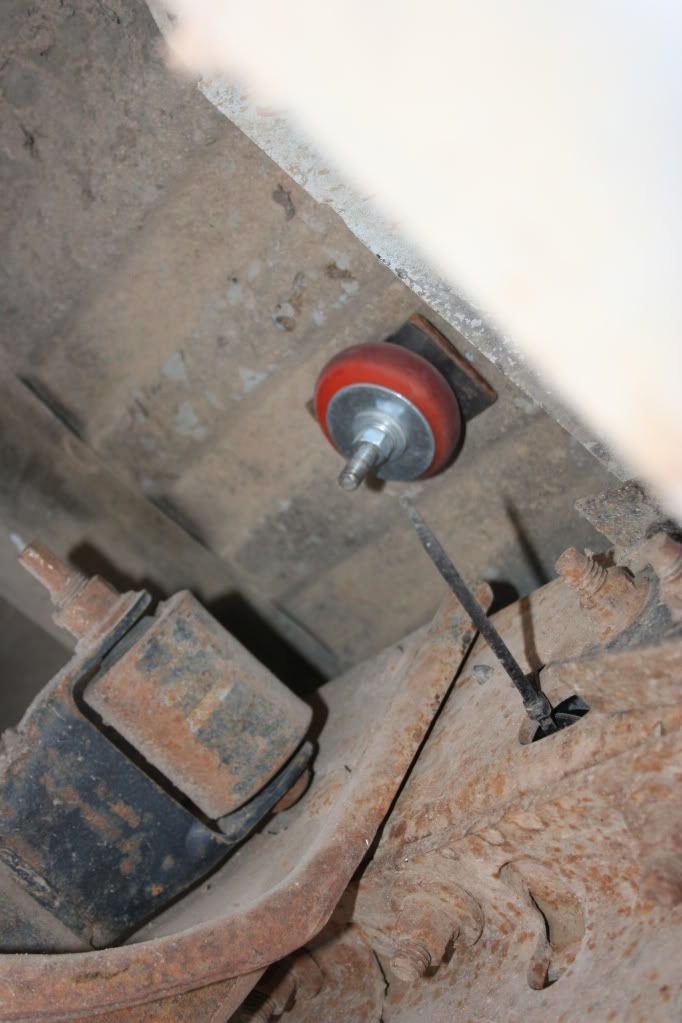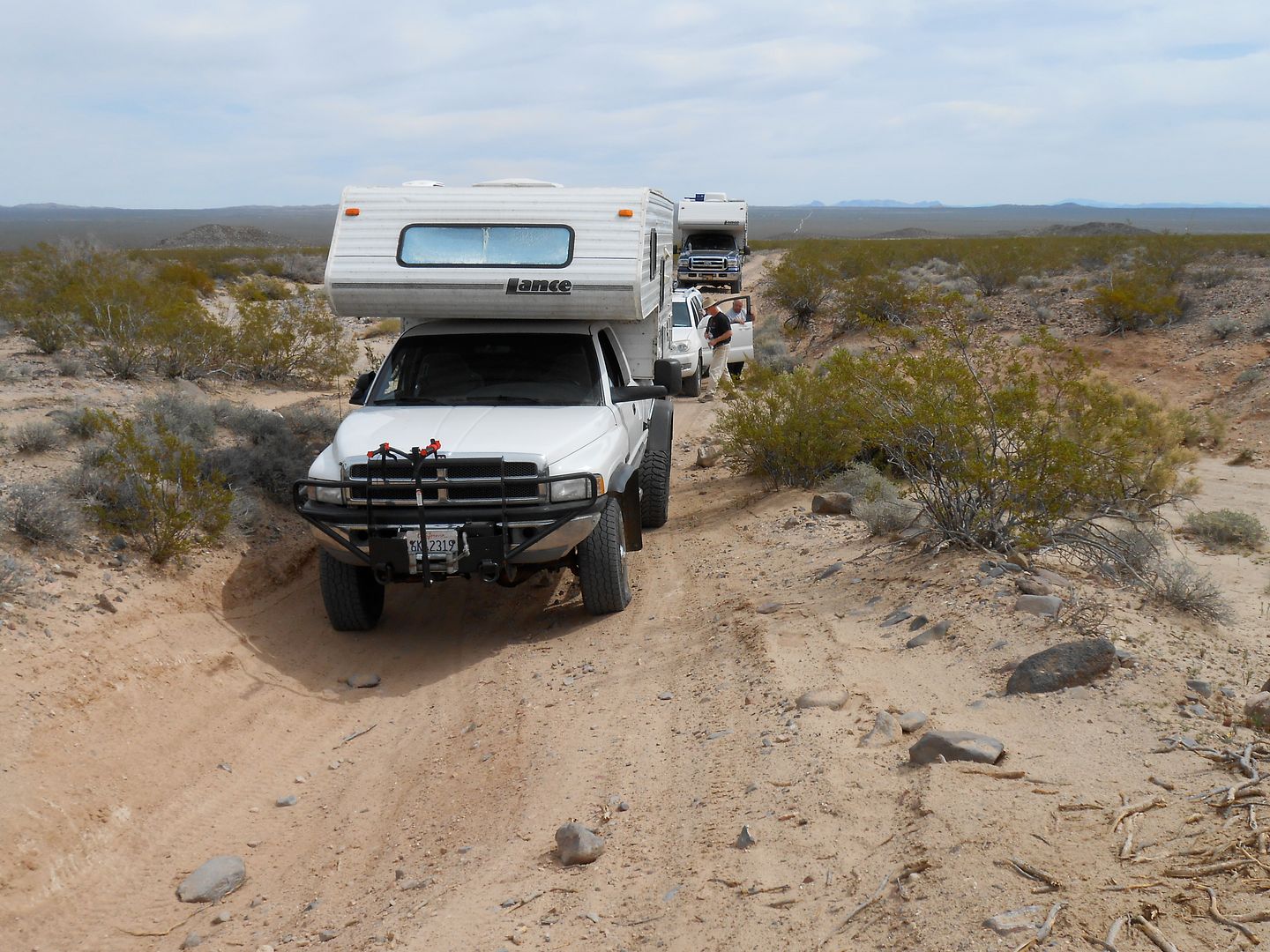Mundo4x4Casa
West slope, N. Ser. Nev.
For years I have heard of truck campers being pulled apart by the twisting of the box in the truck bed and the resisting of said twisting by the four tie-downs connecting the box to the bed or frame.
1. This happens when off-road or when the axles flex mightily when you drop a wheel in a large hole or rut.
2. It can also happen if you have the tie downs too tight.
I have actually seen campers that have either pulled one or some of the eye bolts off right thru the frame of the camper. Also, I have personally seen major damage to all four tie-down eye bolt locations on the camper without pulling thru. All specimens were of the wood frame variety.
3. This was exacerbated by not having Lance Camper guides or a pair of wooden spacers (2x4) screwed to the camper frame bottom and filling the void between the camper base and the fender wells. as the camper could slide side to side putting further stress on the tie downs. It is also worse if you do not disconnect one side of your rear anti-sway bar.
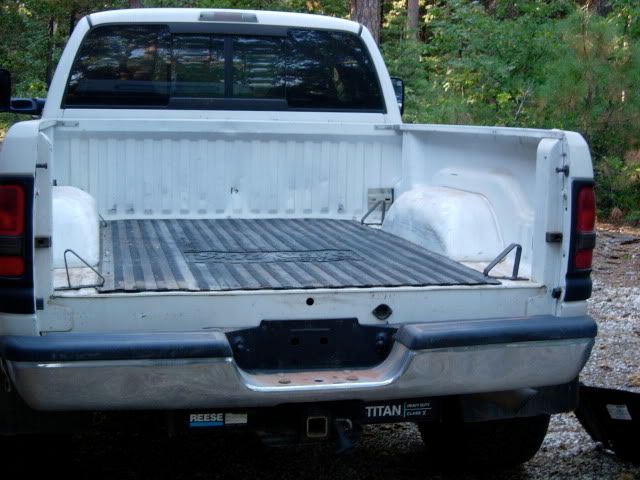
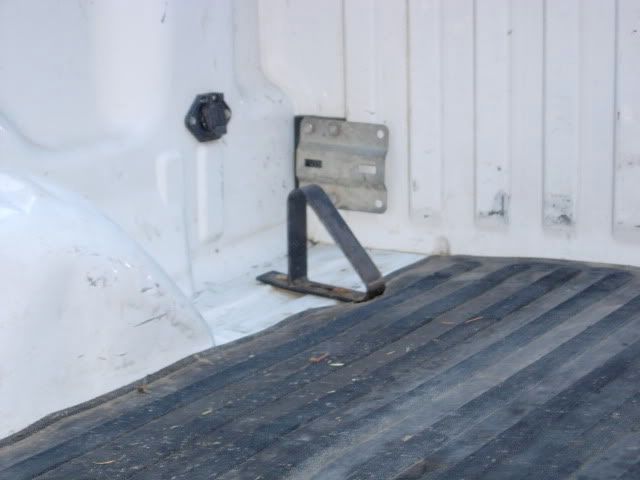
There is a large body of information on how to use a "three-point" system to allow the truck frame to twist but not the camper frame itself. Most of these articles are pointed at a very long flexible frame like on an Izusu truck where you really need a very expensive three point system to survive.
The system on my truck/camper used 4 tie downs; two at the front of the bed/camper box using a turnbuckle arrangement with interior springs that give a little bit when the bed twists, and also angled to help keep the box forward, and two at the rear that have no springs but are tied to the Dodge's bumper and actually angled to pull toward the front, also. The bumper acts as the springs here, flexing when torqued.
The reason I posted this little ditty is that we are going to do the Mojave Road next week and there are a few places that will twist the frames mightily, and , I think put the tie downs to the maximum distension, thus pulling mightily on the eye bolts in my wooden frame. Sounds like disaster to me. So, to counter act these forces, I'm going to loosen the rear tie downs quite a bit before attempting the axle twisting sections. My hope is that the bed can twist underneath the camper and not effect negatively the camper itself. The other thing is that 2/3 or more of the weight of the camper is on or near the front tie downs, hopefully allowing the 1/3 to lift slightly at the corners when the bed flexes. The good news is that I have a short bed so a rather short plane to twist, and a rather stiff Dodge frame which flexes not much. I will report if we get damage. The other two TC's in the expedition have long beds, one small, hard side Lance and one Outfitter.
I'm not a fan of insulation board for flex under an off-road camper, or anything that has any give: too much sway of the camper in the bed. The first year I carried the Lance it was on corrugated plastic bed liner. Not good. It did have accordion-like flex and before the Lance Guides it slid from side to side putting a lot of stress on the tie downs. When I installed the Lance Guides I put them slightly more inboard than per the directions. There is now only about 1/2" clearance on either side, prompting an accurate loading technique. After good advice from folks on the Truck Camper Forum I ditched the bed liner (at least for camper use) and went with a thick rubber mat. Still too much flex. Too spongy. At least the camper slid no more. This still allowed the camper to sway too much for me. And make no mistake here, it was swaying in the bed, not the bed swaying. My final solution was a thin rubber bed mat. No slide; minimal sway. The guides take the stress off the tie downs and delivers it through the guides to the floor of the camper because it won't slide sideways and pull on the tie downs. The camper is in a not-so-tight, side to side keeper or notch.
I have always loosened the tie downs on twisty turf; but all four. That's my point here. What about letting the front of the camper stay put in the bed (2/3's of the weight is here anyway) and allowing the rear of the box to lift on either side, not trying to force the same contour as the bed as it twists. Kind of like a poor man's three-point.
I was trying to get some reaction from those who have broached this twisty problem before.
Lots of twisting here; all tie downs were loosened
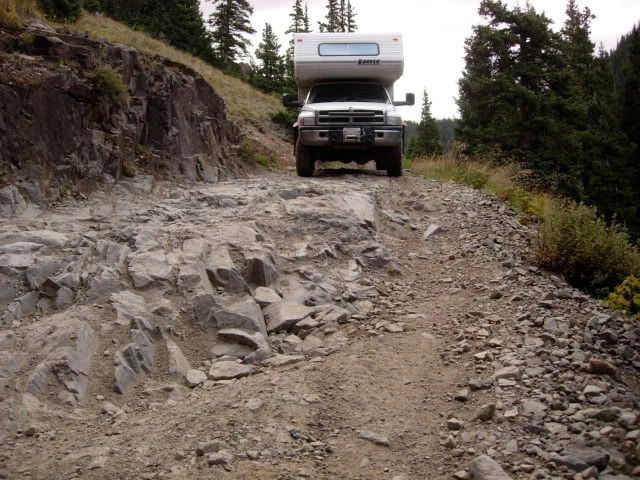
regards, as always, jefe
1. This happens when off-road or when the axles flex mightily when you drop a wheel in a large hole or rut.
2. It can also happen if you have the tie downs too tight.
I have actually seen campers that have either pulled one or some of the eye bolts off right thru the frame of the camper. Also, I have personally seen major damage to all four tie-down eye bolt locations on the camper without pulling thru. All specimens were of the wood frame variety.
3. This was exacerbated by not having Lance Camper guides or a pair of wooden spacers (2x4) screwed to the camper frame bottom and filling the void between the camper base and the fender wells. as the camper could slide side to side putting further stress on the tie downs. It is also worse if you do not disconnect one side of your rear anti-sway bar.


There is a large body of information on how to use a "three-point" system to allow the truck frame to twist but not the camper frame itself. Most of these articles are pointed at a very long flexible frame like on an Izusu truck where you really need a very expensive three point system to survive.
The system on my truck/camper used 4 tie downs; two at the front of the bed/camper box using a turnbuckle arrangement with interior springs that give a little bit when the bed twists, and also angled to help keep the box forward, and two at the rear that have no springs but are tied to the Dodge's bumper and actually angled to pull toward the front, also. The bumper acts as the springs here, flexing when torqued.
The reason I posted this little ditty is that we are going to do the Mojave Road next week and there are a few places that will twist the frames mightily, and , I think put the tie downs to the maximum distension, thus pulling mightily on the eye bolts in my wooden frame. Sounds like disaster to me. So, to counter act these forces, I'm going to loosen the rear tie downs quite a bit before attempting the axle twisting sections. My hope is that the bed can twist underneath the camper and not effect negatively the camper itself. The other thing is that 2/3 or more of the weight of the camper is on or near the front tie downs, hopefully allowing the 1/3 to lift slightly at the corners when the bed flexes. The good news is that I have a short bed so a rather short plane to twist, and a rather stiff Dodge frame which flexes not much. I will report if we get damage. The other two TC's in the expedition have long beds, one small, hard side Lance and one Outfitter.
I'm not a fan of insulation board for flex under an off-road camper, or anything that has any give: too much sway of the camper in the bed. The first year I carried the Lance it was on corrugated plastic bed liner. Not good. It did have accordion-like flex and before the Lance Guides it slid from side to side putting a lot of stress on the tie downs. When I installed the Lance Guides I put them slightly more inboard than per the directions. There is now only about 1/2" clearance on either side, prompting an accurate loading technique. After good advice from folks on the Truck Camper Forum I ditched the bed liner (at least for camper use) and went with a thick rubber mat. Still too much flex. Too spongy. At least the camper slid no more. This still allowed the camper to sway too much for me. And make no mistake here, it was swaying in the bed, not the bed swaying. My final solution was a thin rubber bed mat. No slide; minimal sway. The guides take the stress off the tie downs and delivers it through the guides to the floor of the camper because it won't slide sideways and pull on the tie downs. The camper is in a not-so-tight, side to side keeper or notch.
I have always loosened the tie downs on twisty turf; but all four. That's my point here. What about letting the front of the camper stay put in the bed (2/3's of the weight is here anyway) and allowing the rear of the box to lift on either side, not trying to force the same contour as the bed as it twists. Kind of like a poor man's three-point.
I was trying to get some reaction from those who have broached this twisty problem before.
Lots of twisting here; all tie downs were loosened

regards, as always, jefe
Last edited:

